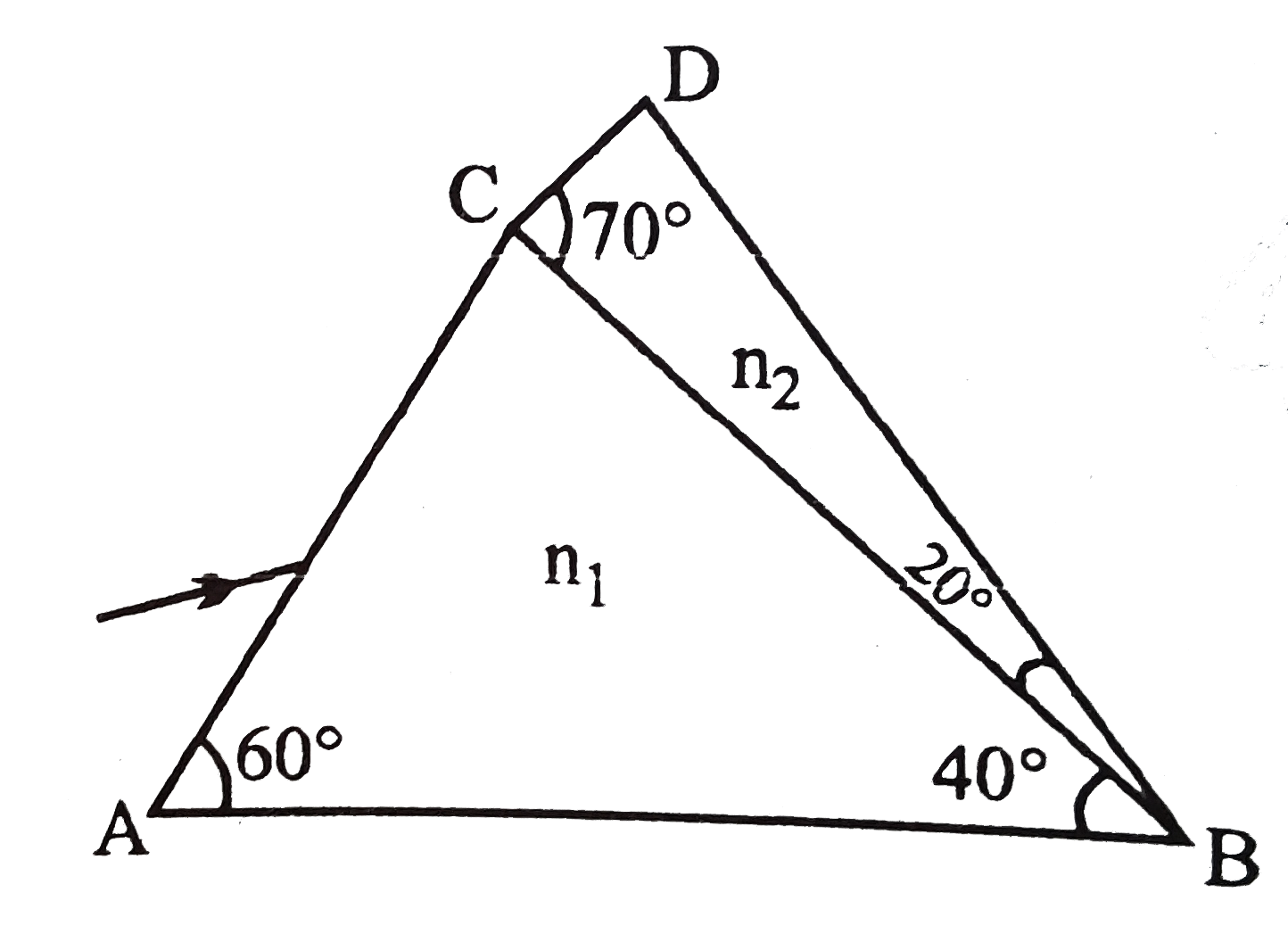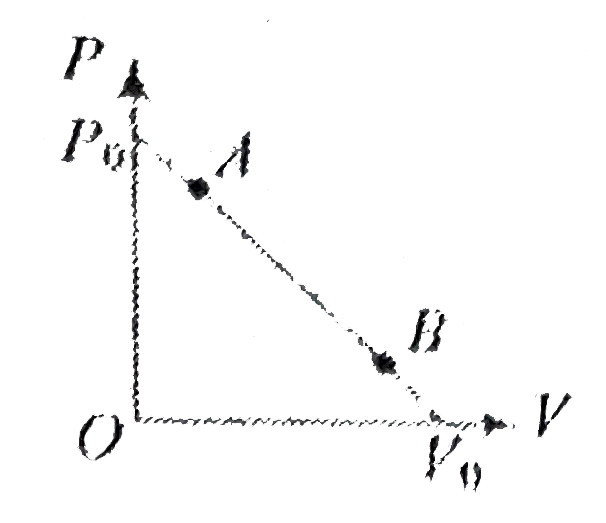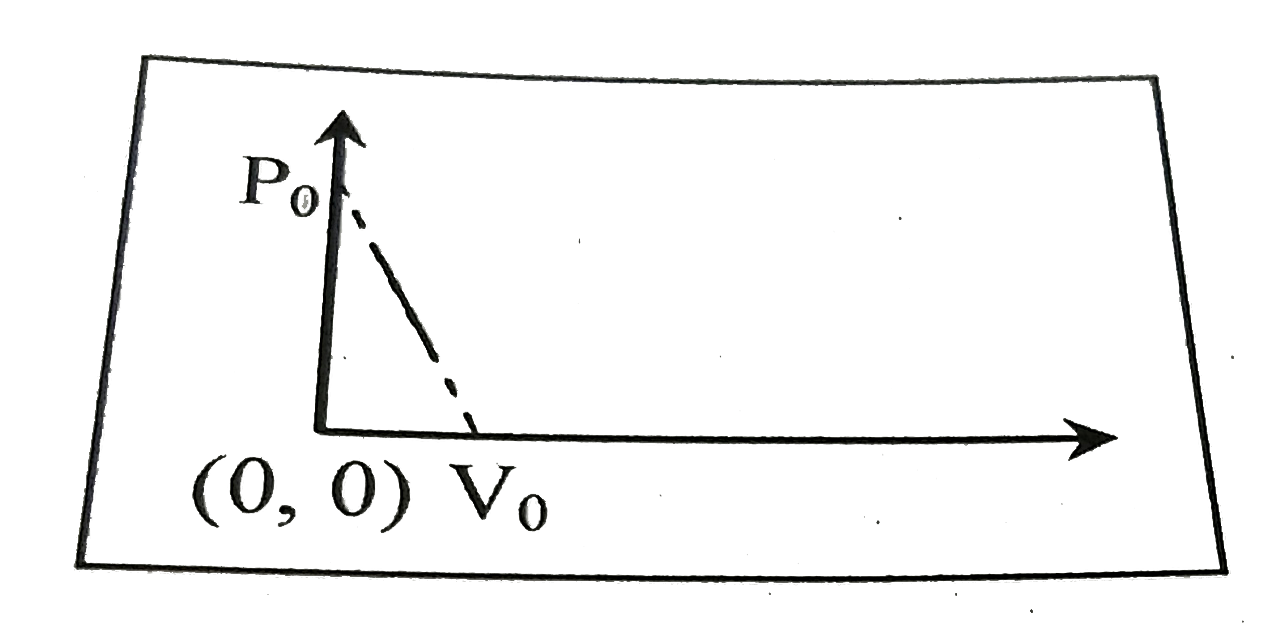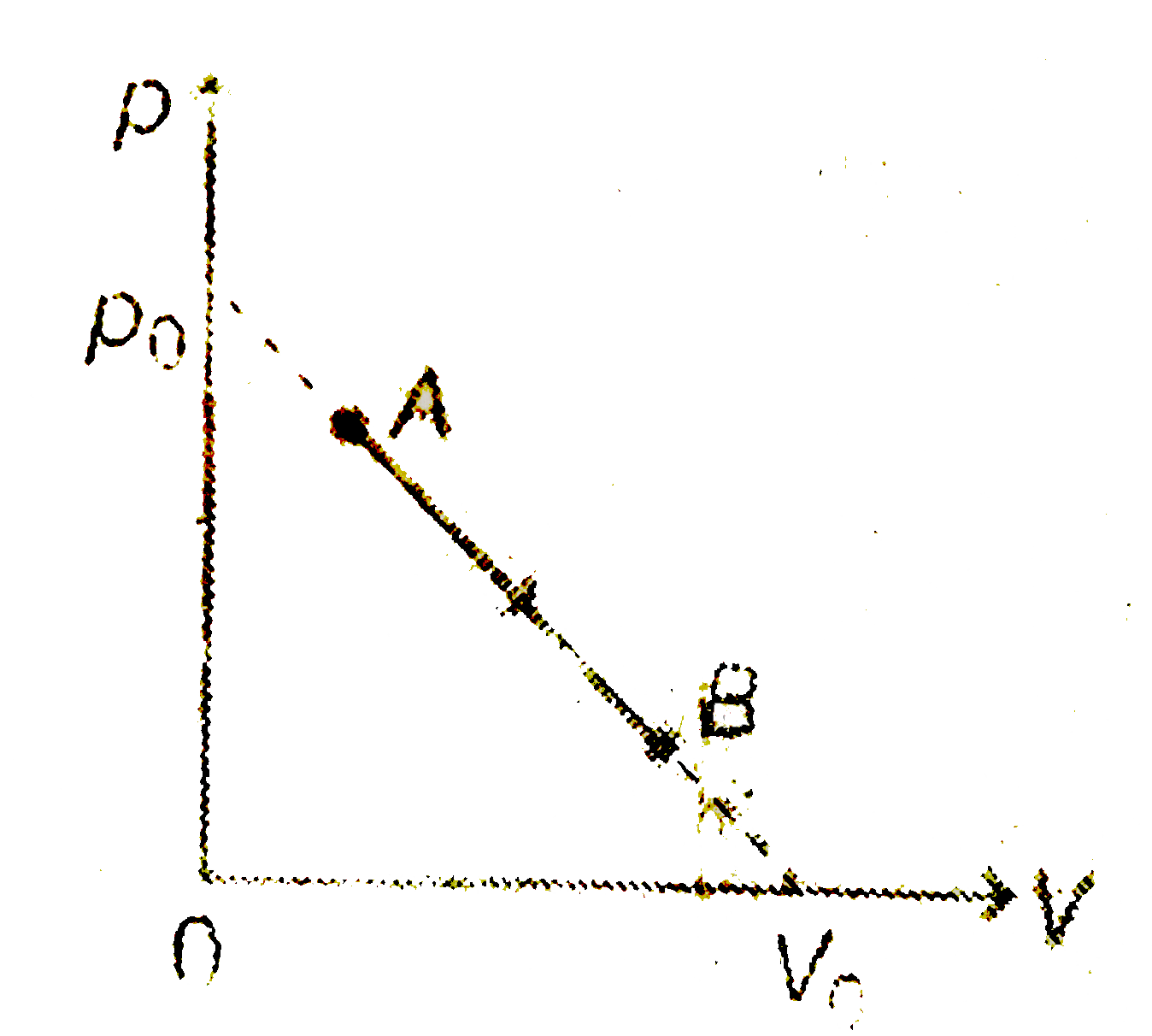n moles of an ideal triatomic linear gas undergoes a process in which the temperature changes with volume as T=K1V2 where K1 is a constant. Choose incorrect alternative. Solution in Gujrati
(a)At normal temperature Cv=52R
(b)At any temperature Cp−Cv=R
(c)At normal temperature molar heat capacity C=3R
(d)At any temperature molar heat capacity C=3R
The correct Answer is:A, B, C
At normal temperature Cv=f2R=52R , At any temperature Cp−Cv=(f2+1)−f2R=R
from process T=k1V2 ideal gas equation PV=nRT we have PV−1 = constant ⇒x=−1
⇒C=Cv+R1−x=Cv+R1+1=Cv+R2 At normal temperature C=52R+R2=3R
Topper's Solved these Questions
- GEOMETRICAL OPTICSBOOK - ALLEN CHAPTER - GEOMETRICAL OPTICSEXERCISE - EXERCISE -01
65 Videos
- GEOMETRICAL OPTICSBOOK - ALLEN CHAPTER - GEOMETRICAL OPTICSEXERCISE - EXERCISE -02
82 Videos
- GEOMETRICAL OPTICSBOOK - ALLEN CHAPTER - GEOMETRICAL OPTICSEXERCISE - subjective
14 Videos
- CURRENT ELECTRICITYBOOK - ALLEN CHAPTER - CURRENT ELECTRICITYEXERCISE - EX.II
66 Videos
- GRAVITATIONBOOK - ALLEN CHAPTER - GRAVITATIONEXERCISE - EXERCISE 4
9 Videos
Similar Questions
On an X temperature scale, water freezes at −125.0∘X and boils at 375.0∘X. On a Y temperature scale, water freezes at −70.0∘Y and boils at −30.0∘Y. The value of temperature on X-scale equal to the temperature of 50.0∘Y on Y-scale is
View SolutionA triangular plate has two cavities , one square and one rectangular as shown in figure . The plate is heated.
_E01_066_Q01.png)
View SolutionA prism of refractive index n1 & another prism of reactive index n2 are stuck together without a gap as shown in the figure.The angle of the prisms are as shown. n1&n2depend onλ,the wavelength of light according to n1=1.20+10.8×104λ2&n2=1.45+1.80×104λ2 where λ is in nm.

(i)Calculate the wavelength λ0for which rays incident at any angle on the interfaceBCpass through without bending at that interface.
(ii) for light of wavelength λ0,find the angle of incidencei on faceACsuch that the deviation produced by the combination of prism is minimum.
View SolutionIn the Bohr's model of hy drogen atom, the electron moves around the nucleus in a circular orbit of radius 5×10−11m. Its time period is 1.5×10−16s. The current associated with the electron motion is:-
View SolutionAssertion : The difference in the value of acceleration due to gravity at pole and equator is proportional to square of angular velocity of earth.
Reason : the value of acceleration due to gravity is minimum at the equator and maximum at the pole.
View SolutionOne mole of an ideal gas undergoes a process P=P0[1+(2V0V)2]−1, where P0V0 are constants. Change in temperature of the gas when volume is changed from V=V0→V=2V0 is:
View SolutionOne mole of an ideal gas goes through a process in which the entropy of the gas changes with temperature T as S = aT + C_V 1n T , where a is a positive constant. C_V is the molar heat capacity of this gas at constant volume. Find the volume dependence of the gas temperature in this process if T = T_0 at V = V_0 .
View Solutionn moles of an ideal gas undergo a process in which the temperature changes with volume as T=kv^(2) . The work done by the gas as the temperature changes from 7_(0) to 47_(0) is
View SolutionA certain amount of an ideal monoatomic gas undergoes a thermodynamic process such that VT^(2)= constat where V= volume of gas, T= temperature of gas. Then under process
View SolutionOne mole of an ideal monatomic gas undergoes a linear process from A to B , in which is pressure P and its volume V change as shown in figure .

The absolute temperature T versus volume V for the given process is
View SolutionOne mole of ideal gas undergoes a linear process as shown in figure below. Its temperature expressed as function of volume V is -

View SolutionOne mole of an ideal monotomic gas undergoes a linear process from A to B in which its pressure p and its volume V change as shown in figure.

The absolute temperature T versus volume V for the given process is
View SolutionOne mole of a monatomic ideal gas undergoes a cyclic process as shown in the figure (where V is the volume and T is the temperature). Which of the statements below is (are) true ?
View SolutionOne mole of a monatomic ideal gas undergoes a cyclic process as shown in the figure (where V is the volume and T is the temperature). Which of the statements below is (are) true?
View SolutionFor a monatomic ideal gas undergoing an adiabatic change, the relation between temperature and volume is T V^(x) = constant where x is:
View SolutionA monatomic gas undergoes a thermodynamic process such that T∝V−27 (T = temperature and V = volume of the gas) As heat is supplied to the gas, choose INCORRECT option.
View Solution
